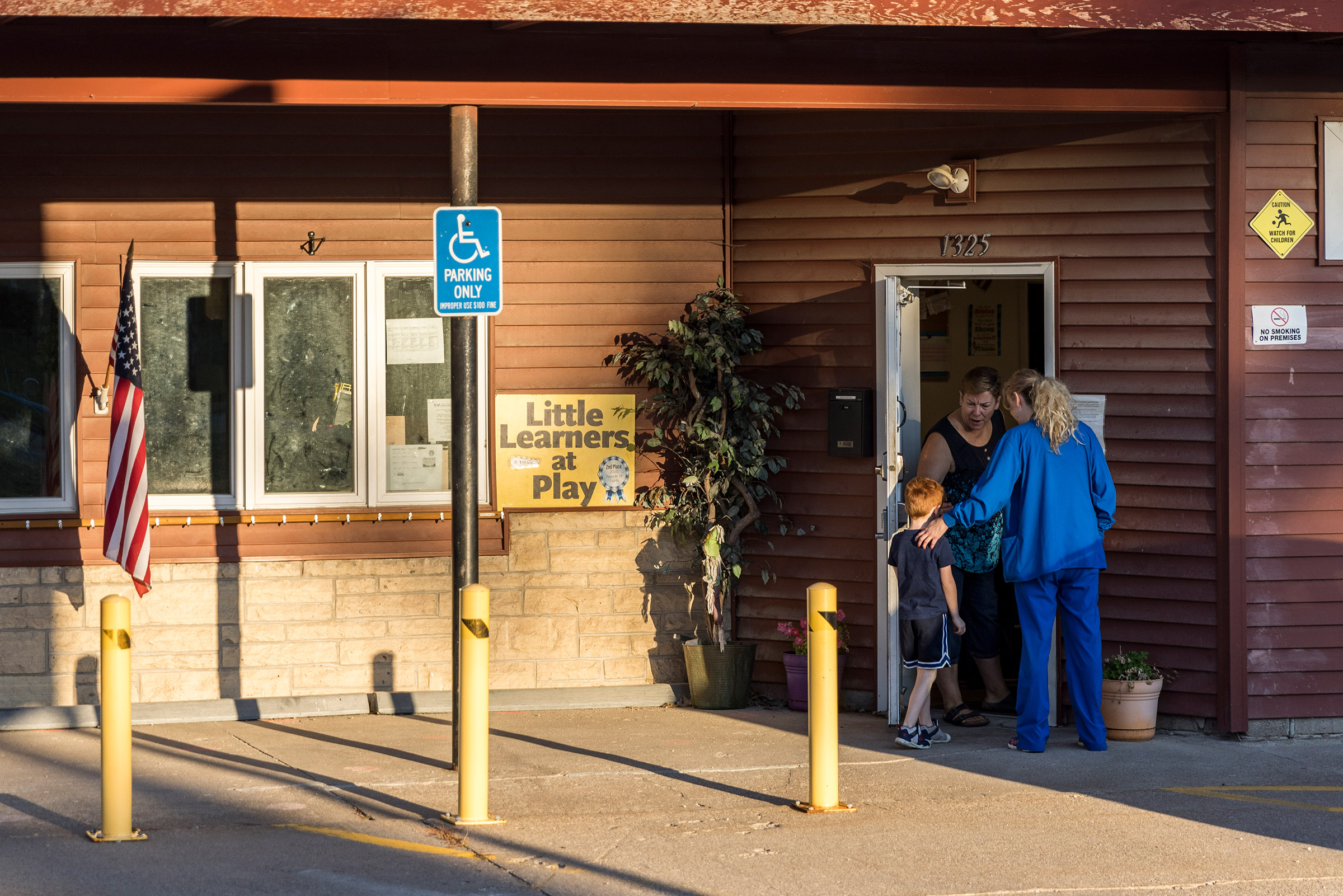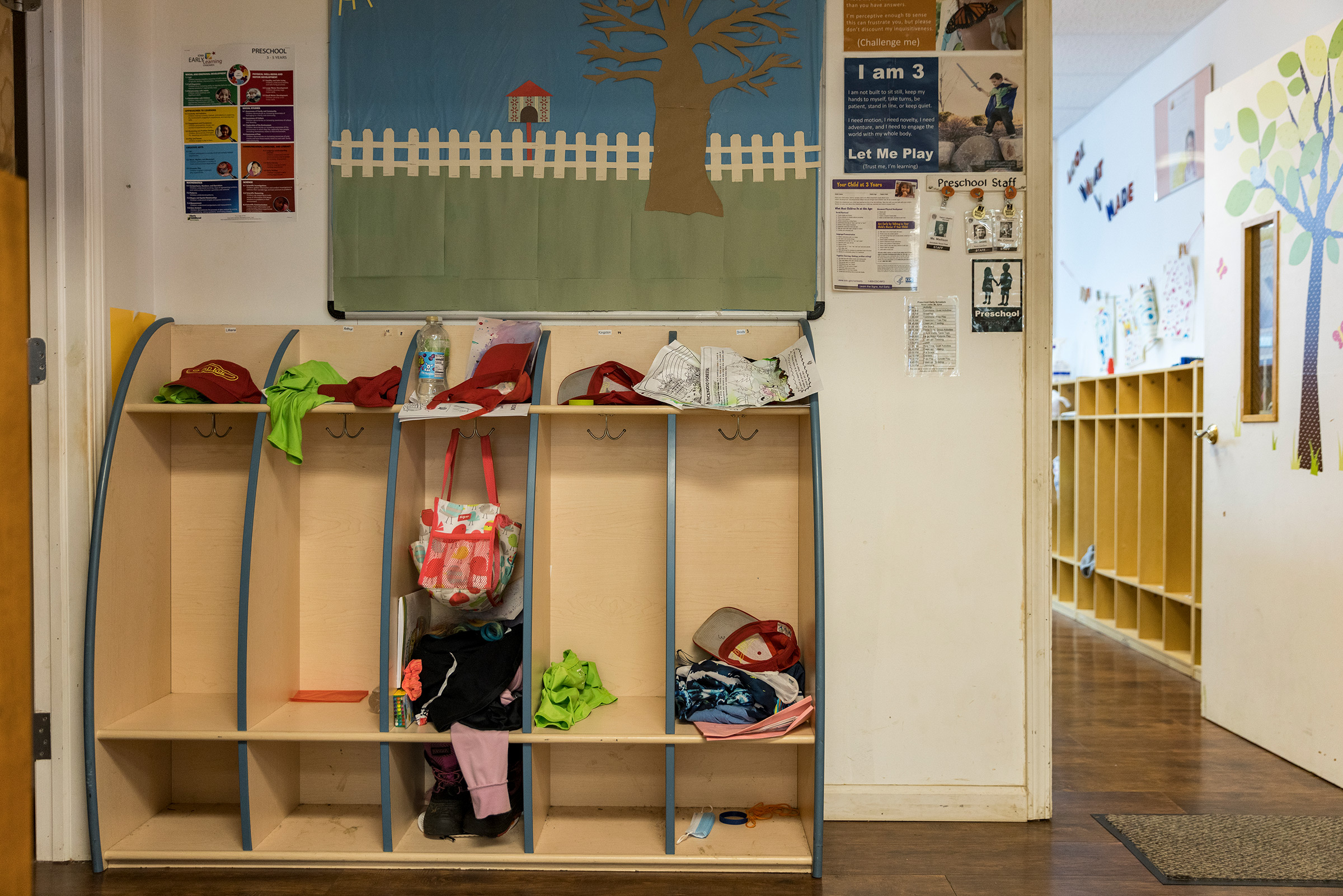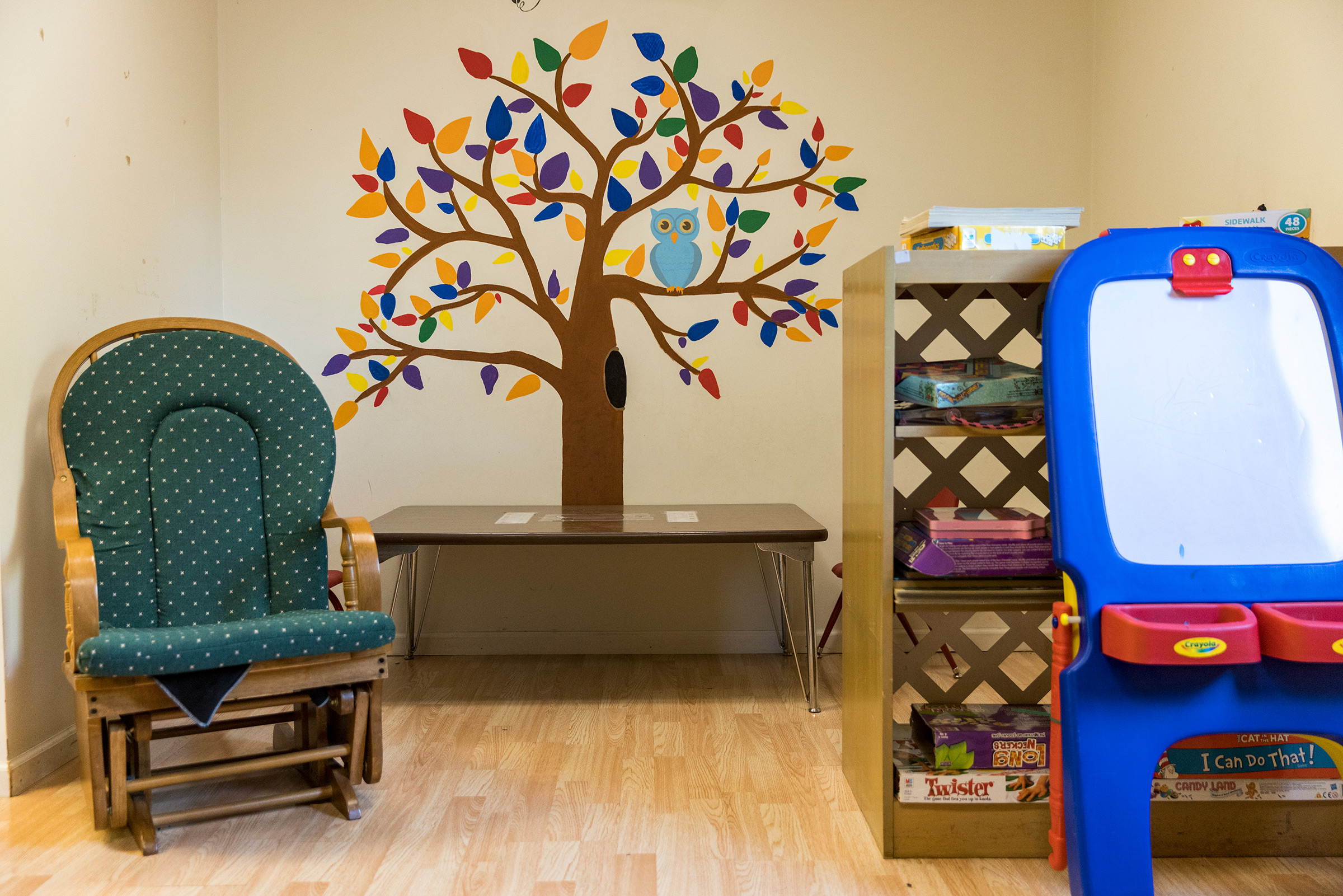Tipton Adaptive Daycare is still filled with colorful plastic chairs, butterfly-adorned cubbies and star mobiles dangling above cribs. But most classrooms were empty of children this week, as the owner of the rural Tipton, Iowa, childcare center prepared to close her business permanently after more than seven years. “I gave up,” says Deborah VanderGaast, the director and founder.
At the heart of VanderGaast’s struggle is a problem of basic economics. Even before the pandemic, Tipton Adaptive was only just breaking even. Before she closed, she was charging $175 per week for full-time infant and toddler care—a rate that was barely affordable for many families she serves. But it was also barely enough to pay her employees, for whom the starting wage was $9 to $11 per hour.
In an interview with TIME in October 2019, VanderGaast described high staff turnover and employees having to work second jobs. “It’s a broken system. And the more broken it got, the more it couldn’t be ignored,” says VanderGaast. The awareness of that broken system is a major part of why she is now running for an Iowa state senate seat as a Democrat—and why she has made improving childcare access one of her top issues.



The closure illustrates the ways in which the country’s intractable childcare crisis has accelerated since the COVID-19 pandemic, fueled by spiraling costs and worker shortages. The national median wage for childcare workers is just over $13 an hour, making it one of the lowest-paid professions in the country. Childcare employment remains 8.4% below pre-pandemic levels, down nearly 90,000 jobs compared to February 2020, according to federal labor data. In Iowa alone, 28% of childcare businesses closed from 2016 to 2021.
But unlike some other industries, childcare is one in which a declining supply doesn’t correspond to lagging demand—precisely because of the precarious economics by which it operates. In fact, America’s families are desperate for daycare, and the economic and social consequences of closures can be huge. In Iowa, for example, the state has an estimated 350,000 more kids under 12 than childcare spots, according to state data. On a national scale, approximately 3.4 million children in 35 states lack access to formal childcare, according to a 2021 report by the Bipartisan Policy Center.
VanderGaast, like many national experts, argues that more government subsidies are needed to make childcare accessible. The current system is unaffordable for more than 60% of working families, according to a U.S. Treasury Department analysis, prohibiting childcare providers from raising rates. But significant fixed costs and necessary safety regulations—for example, maximums on how many children each employee can care for at a time—also prevent childcare directors from cutting costs further. In fact, VanderGaast says she actually lost money on every child in her care under age 3, due to extra requirements that protect the youngest children.
“Fundamentally, there is not enough public money in the system,” says Elliot Haspel, a family policy expert and author of Crawling Behind: America’s Childcare Crisis and How to Fix It. “We cannot innovate our way out of this. We cannot entrepreneur our way out of this.”
This year, Washington, D.C., city-council members and Utah state leaders both gave childcare workers one-time bonuses in an effort to keep them in their jobs. But the Inflation Reduction Act was signed into law by President Joe Biden on Aug. 16 without draft provisions that would have improved childcare access, expanded the child tax credit, and lowered the cost of childcare for low-income families.
Tipton Adaptive’s closure on Aug. 19 leaves just one state-licensed daycare center for children younger than preschool in Tipton, a city of about 3,200 people in eastern Iowa. “We needed both of our childcares in this town,” says Shanon Hillyer, director of Cedar County Coordinated Child Care, Inc., the remaining daycare. Hillyer’s nonprofit currently enrolls 29 children aged six weeks to 4 years old, and has a waitlist of 24 families for that age group. She would like to take on more kids, and she knows there’s overwhelming demand in the community—but she has also struggled to hire more workers who are both qualified and willing to take on the job. (Her starting wage is $11.)


Some lucky families from Tipton Adaptive have found a space in one of Hillyer’s programs. Others have sent their kids to in-home daycares, some of which are not licensed by the state. The families that relied on VanderGaast included nurses, construction workers, and farmers. She says many are still trying to cobble together a solution. At least one family moved out of the county to be closer to family members who can help look after their kids. Iowa estimates that the childcare shortage costs the state $935 million annually in lost tax revenue, absences, and employee turnover. And women are more likely than men to leave the workforce, and miss out on earning potential, due to lack of childcare.



VanderGaast hopes to take the issue to the Iowa legislature in Des Moines. After handily winning her primary in June, she faces an uphill fight against Republican Kerry Gruenhagen, a farmer, in the race for the District 41 state Senate seat. If elected in November, she wants to expand childcare subsidies, fight for better pay for childcare workers, support a payroll tax on employers to fund childcare programs, and resolve safety-regulation discrepancies between in-home care and daycare centers. “I’ve been fighting so hard to fight the childcare crisis, screaming, I feel like, at the top of my lungs, and nobody can hear me,” she says.



In between campaigning, she’s planning to get a job with the local school district as a substitute nurse and bus driver.
As for Tipton Adaptive Daycare, VanderGaast is holding out hope that she can sell or lease its building to another childcare provider. That’s why she has held off on taking down decorations and moving out furniture. “Are all these classrooms going to be ripped up for a warehouse or a sales floor?” she says. “Is my beautiful playground going to be bulldozed for a parking lot?”

More Must-Reads from TIME
- Cybersecurity Experts Are Sounding the Alarm on DOGE
- Meet the 2025 Women of the Year
- The Harsh Truth About Disability Inclusion
- Why Do More Young Adults Have Cancer?
- Colman Domingo Leads With Radical Love
- How to Get Better at Doing Things Alone
- Michelle Zauner Stares Down the Darkness
Write to Katie Reilly at Katie.Reilly@time.com
